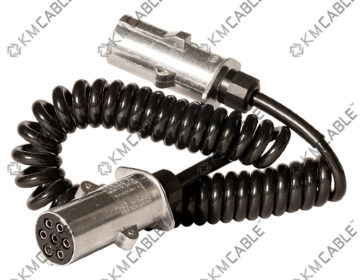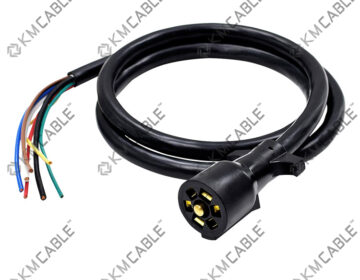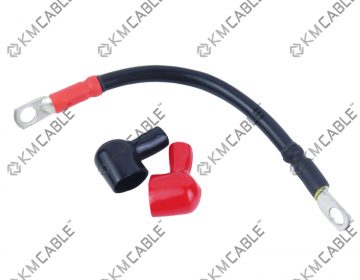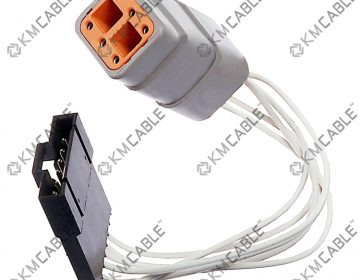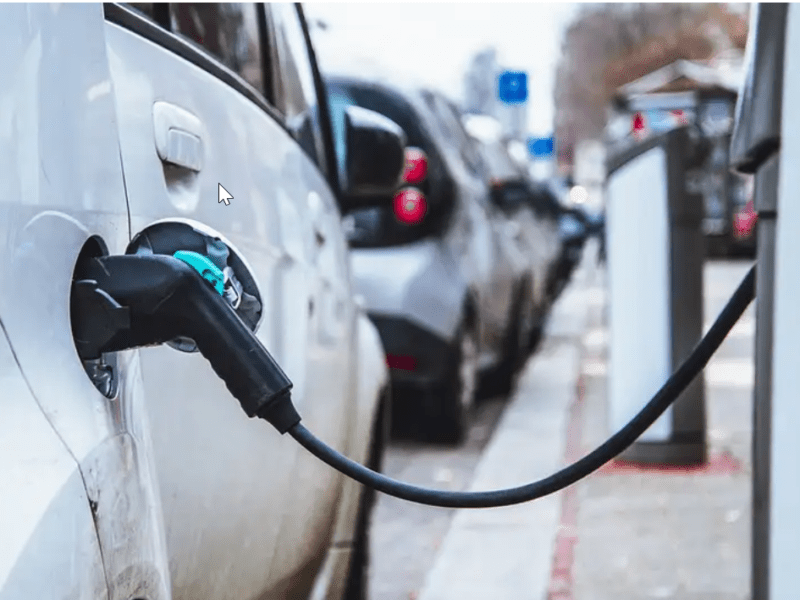
The rapid adoption of electric vehicles (EVs) worldwide has brought a crucial component into the spotlight: the electronic vehicle (EV) cable. These cables serve as the lifeline of EVs, enabling the transfer of electricity from charging stations to vehicles. The quality, type, and standardization of EV cables are essential for ensuring safety, efficiency, and compatibility across different vehicles and charging stations. In this article, we’ll explore the various types of EV cables, their international standards, and what you need to know about them.
Types of Electronic Vehicle Cables
EV cables come in various types, primarily classified by their charging method—AC (Alternating Current) or DC (Direct Current). Each type serves specific charging needs and infrastructure requirements.
AC Charging Cables
AC charging cables are commonly used for residential and public charging stations. They connect to standard household outlets or dedicated EV chargers and are typically used for slow or moderate charging.
DC Charging Cables
DC charging cables are designed for fast charging and are usually found in commercial or dedicated fast-charging stations. They bypass the vehicle’s onboard charger, delivering high voltage directly to the battery.
Mode 1, Mode 2, Mode 3, and Mode 4 Cables
- Mode 1: Used for simple, slow charging from a standard electrical outlet without any in-cable protection.
- Mode 2: Similar to Mode 1 but includes an in-cable control box for added safety.
- Mode 3: Used in dedicated EV charging stations, offering higher power and enhanced safety features.
- Mode 4: Designed for DC fast charging, delivering the highest charging speed available.
International Standards for EV Cables
To ensure safety and compatibility, EV cables must adhere to international standards. These standards govern everything from the cable’s construction to its performance under various conditions.
IEC 62196 Standard
The IEC 62196 standard defines the electrical and physical characteristics of EV connectors and charging cables. It covers various types of connectors, including Type 1 (J1772) and Type 2 (Mennekes), used in different regions worldwide.
SAE J1772
Commonly used in North America, the SAE J1772 standard defines the electrical and communication protocols between the EV and the charging station, ensuring interoperability.
CHAdeMO and CCS Standards
These standards are primarily used for DC fast charging. CHAdeMO is common in Japan, while CCS (Combined Charging System) is widely adopted in Europe and North America.
AC Charging Cable Specifications
AC charging cables are designed with specific power capacities, lengths, and safety features to meet the needs of everyday EV users.
Power Capacity
Most AC charging cables deliver up to 22 kW, depending on the EV’s onboard charger and the power supply.
Length and Flexibility
These cables are typically 5 to 7 meters long, allowing flexibility in positioning the vehicle relative to the charging point.
Safety Features
AC charging cables include safety features like overcurrent protection, insulation resistance, and sometimes integrated temperature sensors to prevent overheating.
DC Charging Cable Specifications
DC charging cables are engineered to handle higher power levels, often exceeding 100 kW, making them suitable for rapid charging.
High Power Delivery
DC fast charging cables can deliver up to 350 kW, enabling ultra-fast charging that can replenish an EV’s battery in minutes.
Cooling Systems
Some DC cables incorporate liquid cooling to manage the heat generated by high power transfer, ensuring safe and efficient operation.
Connector Types
DC cables are equipped with specific connectors like CHAdeMO or CCS, depending on the regional standard.
Understanding EV Charging Cable Modes: Mode 1, Mode 2, Mode 3, and Mode 4
The electric vehicle (EV) charging ecosystem is structured around different “modes” that define the level of communication, power delivery, and safety features associated with the charging process. These modes—Mode 1, Mode 2, Mode 3, and Mode 4—are essential in understanding how EVs are charged across various settings, from residential homes to public fast-charging stations. Each mode has unique characteristics, advantages, and limitations.
Mode 1 Charging Cables
Mode 1 is the most basic form of EV charging, typically used in older or less sophisticated systems. This mode allows the EV to be charged directly from a standard electrical outlet, such as the ones found in residential homes. The connection is straightforward, without any additional safety features like control or communication between the vehicle and the charging station.
Key Characteristics:
- Direct Connection: The EV is plugged directly into a standard electrical outlet using a basic cable.
- No Communication: There is no active communication between the vehicle and the power source, which means the cable itself doesn’t have the ability to monitor or control the charging process.
- Low Power: Typically, Mode 1 supports low power levels, often limited to a maximum of 16 amps, which results in slower charging times.
Advantages:
- Simplicity: Easy to use with minimal equipment needed.
- Accessibility: Can be used with any standard household outlet.
Limitations:
- Safety Concerns: Lack of in-cable control and protection makes it less safe than other modes, especially in preventing overcurrent or short circuits.
- Limited Use: Increasingly phased out due to safety concerns and inefficiencies, making it uncommon in modern EV infrastructure.
Applications:
Typically used in countries or regions with older electrical infrastructure, or where EV adoption is still in its early stages.
Mode 2 Charging Cables
Mode 2 charging builds upon Mode 1 by integrating a safety control box into the charging cable. This mode allows EVs to be charged from a standard electrical outlet but with added protection features, making it safer and more versatile than Mode 1.
Key Characteristics:
- In-Cable Control Box: The cable includes an in-line control and protection device (IC-CPD), which provides basic communication between the EV and the power source. This box helps manage charging by preventing electrical faults like overcurrent or overvoltage.
- Moderate Power: Supports charging currents typically ranging from 10 to 32 amps, depending on the outlet and the vehicle’s capabilities.
Advantages:
- Improved Safety: The control box significantly reduces the risk of electrical hazards, making Mode 2 a safer option than Mode 1.
- Versatility: Compatible with standard household outlets, making it suitable for residential use.
Limitations:
- Slower Charging: Like Mode 1, Mode 2 is limited by the power capacity of the outlet, resulting in slower charging times compared to dedicated charging stations.
- Bulkier Cables: The inclusion of the control box makes the cable bulkier and slightly more cumbersome to handle.
Applications:
- Commonly used for home charging, especially in households without a dedicated EV charger.
Mode 3 Charging Cables
Mode 3 is the standard for EV charging in public and semi-public environments, such as commercial charging stations. It involves a dedicated EV charging station (also known as an EVSE – Electric Vehicle Supply Equipment) that provides higher power levels and advanced safety features.
Key Characteristics:
- Dedicated Charging Stations: Mode 3 requires the use of an EVSE, which connects directly to the vehicle via a specific charging cable.
- Enhanced Communication: There is active communication between the EV and the charging station, enabling better control of the charging process, including power regulation and fault detection.
- Higher Power: Mode 3 supports higher charging currents, typically ranging from 16 to 63 amps, allowing for faster charging.
Advantages:
- Fast Charging: Higher power levels mean that Mode 3 can charge an EV much faster than Modes 1 and 2.
- Advanced Safety: Built-in safety features, such as ground fault protection, ensure a secure and reliable charging experience.
- Smart Charging Capabilities: Mode 3 stations often include smart features, such as energy monitoring, load management, and integration with renewable energy sources.
Limitations:
- Infrastructure Requirement: Requires a dedicated charging station, which may not be available in all locations, especially in private residences.
- Higher Cost: The infrastructure and installation costs associated with Mode 3 can be higher than for Modes 1 and 2.
Applications:
Widely used in public charging stations, workplaces, and residential buildings with dedicated EVSE installations.
Mode 4 Charging Cables
Mode 4 represents the most advanced level of EV charging, specifically designed for direct current (DC) fast charging. This mode is used in high-power charging stations, typically located in public areas or along highways, where rapid charging is essential.
Key Characteristics:
- DC Fast Charging: Unlike Modes 1, 2, and 3, which use alternating current (AC), Mode 4 uses direct current (DC) to charge the vehicle’s battery directly. This allows for much higher power transfer and faster charging times.
- External Charger: The charger in Mode 4 is external to the vehicle, housed in the charging station itself, meaning the vehicle’s onboard charger is bypassed.
- Very High Power: Mode 4 supports power levels up to 350 kW, enabling ultra-fast charging that can bring a vehicle’s battery to 80% in as little as 15-30 minutes, depending on the EV’s battery capacity.
Advantages:
- Ultra-Fast Charging: Ideal for long-distance travel, where quick recharging is critical.
- High Efficiency: Direct DC charging reduces energy losses, making the charging process more efficient.
Limitations:
- Infrastructure-Dependent: Requires substantial infrastructure, including high-capacity power connections and sophisticated cooling systems.
- Higher Costs: The cost of setting up Mode 4 charging stations is significantly higher, which can result in higher charging fees for users.
- Limited Availability: Mode 4 charging stations are less common than Mode 3, primarily found in strategic locations like highways and major urban centers.
Applications:
Mode 4 is the go-to option for commercial charging networks, highway charging stations, and other areas where rapid recharging is necessary for high mileage or quick turnaround.
Understanding the differences between Mode 1, Mode 2, Mode 3, and Mode 4 EV charging cables is crucial for both EV owners and those looking to develop EV infrastructure. Each mode serves specific use cases, balancing the needs for safety, convenience, speed, and cost. As EV technology evolves, these charging modes continue to adapt, ensuring that electric vehicles remain a practical and reliable option for a growing number of drivers worldwide.
Connector Types in EV Cables
Various connector types are used in EV cables, each corresponding to specific regional standards and charging modes.
Type 1 Connector
Also known as the J1772 connector, Type 1 is commonly used in North America for AC charging.
Type 2 Connector
The Type 2 (Mennekes) connector is the standard in Europe, supporting both AC and DC charging.
Combined Charging System (CCS)
CCS combines AC and DC charging in one connector, offering flexibility and compatibility with multiple charging modes.
CHAdeMO Connector
CHAdeMO is a DC fast charging standard used primarily in Japan and by certain automakers globally.
Material Composition of EV Cables
The materials used in EV cables are crucial for ensuring durability, safety, and performance.
Conductor Materials
Copper is the primary conductor material due to its excellent conductivity, though aluminum is sometimes used for cost reduction.
Insulation and Jacket Materials
Insulation materials like thermoplastics and elastomers provide electrical isolation and mechanical protection, while the outer jacket protects against environmental factors.
Durability and Weather Resistance
High-quality EV cables are designed to withstand extreme temperatures, UV exposure, and mechanical stress, ensuring long-term reliability.
Safety Considerations for EV Cables
Safety is paramount in EV cables, with various features and standards in place to protect users and vehicles.
Overcurrent and Overvoltage Protection
Modern EV cables include built-in protections against electrical faults, preventing damage to the vehicle and the charging system.
Insulation Resistance
High insulation resistance is essential to prevent electrical leakage and ensure user safety.
Fire Safety Standards
EV cables must comply with fire safety standards, often requiring the use of flame-retardant materials to reduce the risk of fire.
Innovations in EV Cable Technology
The field of EV cables is constantly evolving, with innovations aimed at improving performance and usability.
Lightweight Materials
New materials are being developed to reduce the weight of EV cables, making them easier to handle and install.
Enhanced Flexibility
Flexible cables are easier to maneuver, reducing strain on connectors and improving user convenience.
Smart Cable Technology
Some modern EV cables include smart features, such as energy monitoring and communication capabilities with the vehicle and charging station.
Regulatory Compliance and Certification
EV cables must meet stringent regulatory requirements to be sold and used in various markets.
UL and CE Marking
UL (Underwriters Laboratories) and CE marking are common certifications that ensure the safety and compliance of EV cables with regional standards.
Testing and Certification Processes
EV cables undergo rigorous testing for electrical safety, durability, and environmental impact before receiving certification.
Global Compliance Challenges
Different regions have varying standards and requirements, posing challenges for manufacturers aiming for global distribution.
FAQs on EV Cables
What is the difference between AC and DC charging cables?
AC cables are used for slower charging at home or public stations, while DC cables are designed for fast charging at specialized stations.
Can I use any cable for my EV?
No, you must use a cable that is compatible with your vehicle and the charging station, and that meets the necessary safety standards.
How long do EV cables last?
With proper care, EV cables can last several years, but their lifespan depends on usage frequency, environmental conditions, and maintenance.
Are there wireless alternatives to EV cables?
Yes, wireless charging technology is being developed, but it is not yet widely available.
What is the safest type of EV cable?
Mode 3 and Mode 4 cables, used in public and fast charging stations, are considered the safest due to their advanced safety features.
How do I maintain my EV cable?
Store your cable properly, avoid exposure to extreme conditions, and regularly inspect it for damage to ensure longevity.

